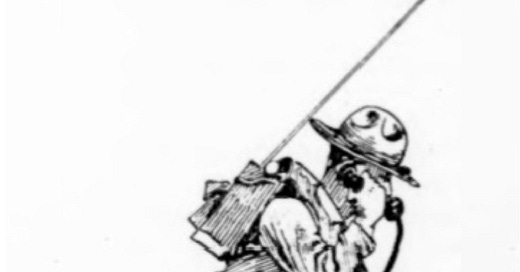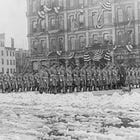The estate of the late John Sayen has graciously given the Tactical Notebook permission to serialize his study of the organizational evolution of American infantry battalions. The author’s preface, as well as previously posted parts of this book may be found in the section of this post marked “for further reading.”
The tables of organization approved in October of 1940 provided for a regimental headquarters capable of round-the-clock operations for an indefinite period of time. This was done by providing each staff officer with a partner who would perform his duties while he rested. Thus, for example, if one shift consisted of the intelligence officer (S-2), the operations officer (S-3), and the logistics officer (S-4), the other would be made up of the adjutant (S-1), the regimental executive officer, and the commanding officer of the service company.
The new tables authorized a substantial reinforcement of both the intelligence platoon and the communication platoon. The former, which was led by the intelligence officer, received two additional scout-observer teams, thereby raising the number of such units from two to four. The latter gained twenty-two additional enlisted men and a truck-mounted radio (SCR-245.) The radio, which weighed 180 pounds, could send voice transmissions receivers that were twenty-five miles away and messages in Morse Code to radio sets within a radius of forty-five miles.
A truck-mounted radio of the same type could also be found in the new anti-tank company, which was the only unit in the infantry regiment in which radio was supposed to be the primary means of communication. (In addition to its SCR-245, the anti-tank company rated five man-pack (SCR-195) radios. Three of these were distributed among the anti-tank platoons, one belonged to the company headquarters, and one was set aside for use by an observer, the officer riding at the head of a column, or the company commander when located away from his command post.)
For a detailed breakdown of the organization of the regimental headquarters company of October 1940, see Appendix 4.9. For the full set of appendices, follow this link. (Both links will take you to the Military Learning Library, a website that I own and manage.)
Source: “Signal Communication: Regiment in the Attack” Infantry School Mailing List (July 1941) pages 154-157
For Further Reading:








Overheard during the Iraq War.
"My daughter has a cell phone the size of her hand. It can access the internet, can send and receive Emails, send encrypted texts, and I've got this thing," (referring to a Icom IC-F3S VHF radio.)